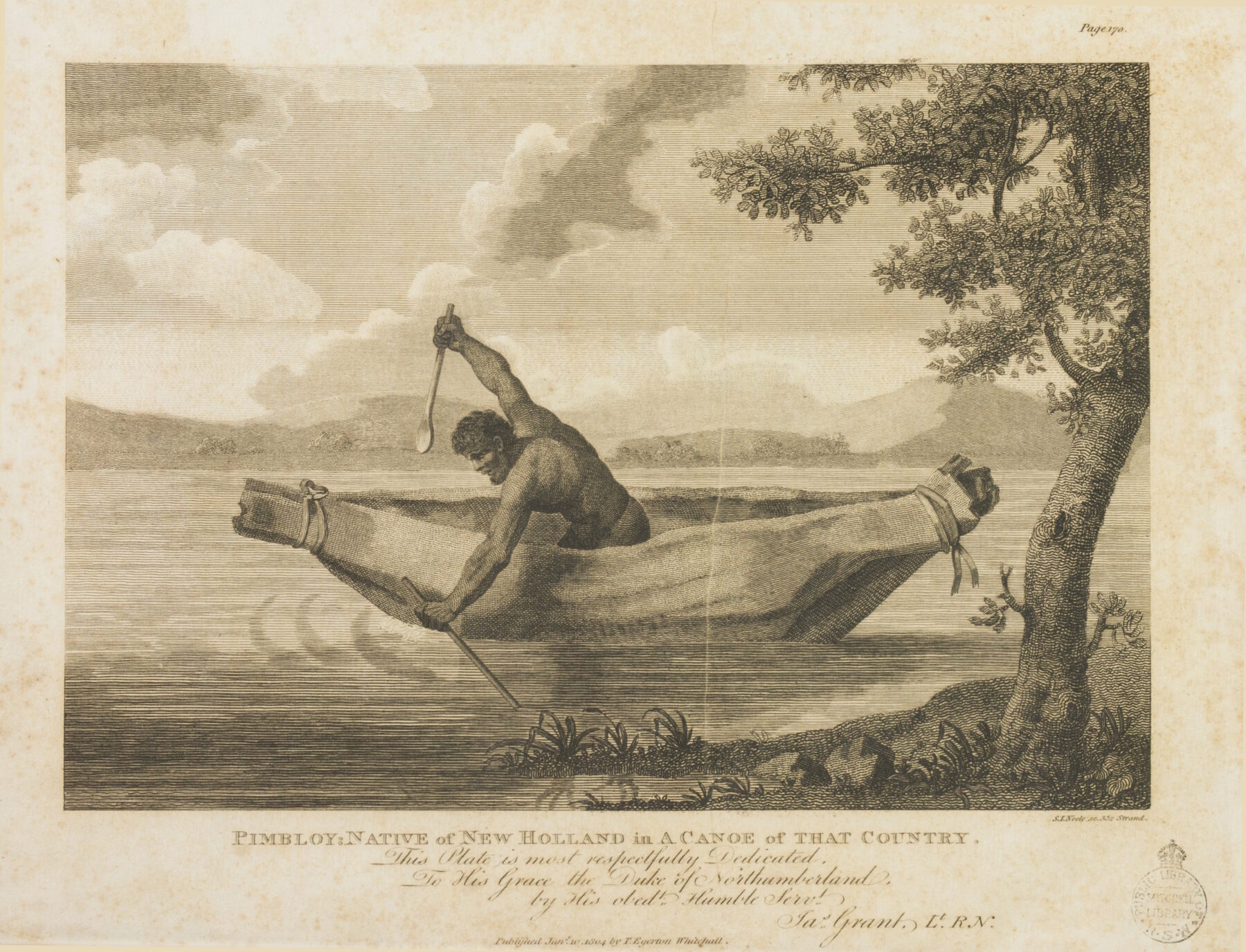Defining Moments in Australian History: Pemulwuy fights back

Members of Aboriginal communities are warned that this story may contain images and names of deceased people.
The Eora people of the area now called Sydney faced profound change when the First Fleet arrived in 1788 carrying nearly 1500 people, limited food supplies, a cargo of foreign animals, sophisticated firearms and a firm belief in their superiority. Within two years, Bidjigal (Bidgigal) man Pemulwuy had mounted strong resistance to the incursion of white settlers onto his people’s traditional lands. Governor Phillip initially maintained cordial relations with the local people, having been instructed to treat the “Indians” well, and “conciliate their affections…[and] maintain friendly relations”. Conflict, however, was inevitable.
The Eora had a complex system of laws that governed social relations, behaviour and resource use. The European invaders had no appreciation of this, and considered the Eora to be savages. A 1789 outbreak of smallpox, introduced by the Europeans, significantly reduced the Indigenous population and temporarily delayed open conflict.
On 10 December 1790, Pemulwuy was involved in the mortal wounding of John McIntyre, who’d been appointed Phillip’s gamekeeper, one of three convicts armed and sent out to hunt game to add to the colony’s dwindling food supply. The Australian Dictionary of Biography notes that McIntyre was “feared and hated by the Eora people”, and surmises that the attack was retribution for his breaking of Indigenous laws and his violence towards the local people.
Phillip called for a punitive raid, sending 50 soldiers and two surgeons equipped with head bags. That party failed to return with corpses, so they were sent out again. In response to this and the growing attacks on his people’s rights, Pemulwuy led a series of raids from 1792 on farming settlements on Bidjigal lands, burning huts, stealing maize and attacking travellers.
By April 1794 the violence was frequent and extensive. In the Battle of Toongabbie, the European reprisal party severed the head of a slain warrior and took it back to Sydney as evidence. In the most substantial confrontation, Pemulwuy led 100 warriors into Parramatta, threatening to spear anyone who tried to stop them. Soldiers opened fire, at least five Indigenous men were killed, and Pemulwuy was wounded. But he survived and escaped a few days later, enhancing his already impressive reputation.

On 1 May 1801, Governor King issued a government and general order that “Aborigines” near Parramatta, Georges River and Prospect could be shot on sight. In November, a proclamation outlawed Pemulwuy and offered a sliding scale of rewards for his death or capture: “To a prisoner for life or 14 years, a conditional emancipation. To a person already conditionally emancipated, a free pardon and a recommendation for a free passage to England. To a settler, the labour of a prisoner for 12 months. To any other descriptions of persons, 20 gallons of spirits and two suits of slops [cheap ready-made clothing].”
On about 2 June 1802, Pemulwuy was shot dead and his head was cut off and sent to Sir Joseph Banks in England for his collection. Soon after, a dispatch arrived from Lord Hobart to Governor King lamenting the settlers’ treatment of the Aboriginal population: “Be it clearly understood that on future occasions, any instance of injustice of wanton cruelty towards the natives will be punished with the utmost severity of the law.”
Who shot Pemulwuy remains a mystery. Research by historian Dr Keith Vincent Smith pointed to Henry Hacking, quartermaster on the First Fleet’s HMS Sirius.
Later research by writer Doug Kohlhoff suggested instead that settlers were far more likely to have been the killers. However, Kohlhoff asks whether it really matters who killed Pemulwuy. At one level, it would matter greatly to his people, but on another, he says: “Knowing who fired the fatal shot does not affect Pemulwuy’s place in history. Pemulwuy was, as [Governor] King recognised, ‘a brave and independent character’. He inspired others, fought hard and died for his land and his people. For that, we can all admire him.”
‘Pemulwuy fights back’ forms part of the National Museum of Australia’s Defining Moments in Australian History project.




